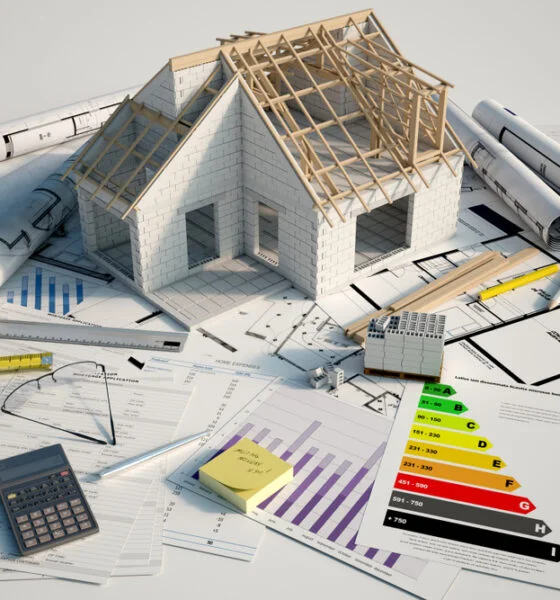

Environment
6 Home Improvements You Can Make to Help the Environment
With the effects of climate change, many are driven to start incorporating sustainable practices into their homes. Saving water and consuming less energy are a few factors that are starting to become a priority for young homeowners.
If you’re making the decision of reducing your carbon footprint, making small improvements in your home is one way to start. But considering there are many ways to approach this, taking the first step can be overwhelming when you don’t know what to prioritize first. But you don’t have to worry, because below is a handy list of things you can easily do to make your home a step closer to being eco-friendly.
1. Switch to energy-efficient appliances
Whether you like it or not, refrigerators, washing machines, and dishwashers are only a few appliances in your home that can consume a lot of energy on a daily basis. If you want to reduce your carbon footprint, switching to energy-efficient versions is a good method for keeping your carbon consumption down.
Thankfully, making the switch is easier these days because many brands now have several energy-efficient options. But if you currently don’t have the budget, you can also focus on making smaller changes, like your light bulb! LED light bulbs use less energy compared to incandescent bulbs. Their lifespan can also take up to 10 years so you wouldn’t need to change them as often, making it easier on your wallet!
2. Plant a garden
If you’ve always wanted to plant your own garden, now would be the best time to start! Having plants around your home can improve its air quality as they absorb carbon dioxide and release oxygen. Having a healthy garden can also provide food and shelter for insects and pollinators, thus improving the ecosystem in your area.
It doesn’t have to be an elaborate garden with exotic plants, as it can be as simple as placing climbing plants on the fences or planting flowers on garden beds. If you want to go the extra mile, you can even learn how to grow your own vegetables so you wouldn’t have to rely on buying produce from the supermarket anymore.
3. Start composting
If you’re on the move to creating your own garden, it would also be beneficial to start composting. It will vastly improve the health and structure of your garden’s soil through organic matter. This will result in better moisture retention and the addition of nutrients, so you won’t have to water your plants as much or use any chemical fertilizers. Compost will also attract beneficial organisms to the soil and eliminates the use of pesticides.
Instead of throwing away kitchen waste, like vegetable peelings, coffee grounds, tea leaves, and eggshells, it would be better to toss them in the compost pile to help your garden grow healthier and more resilient plants.
4. Ditch your grass lawn
Since we’re on the subject of gardening, it would also be wise to consider switching your grass lawn to an environmentally friendlier alternative. Lush and green grass lawns may be attractive to look at, but their maintenance is actually terrible for the environment. Grass lawns take a ton of water to keep them hydrated, and the mowers that keep them perfectly manicured can use a lot of gas.
If you want to make some improvements, it would be better to place some native flowers or plants on a portion of your lawn. If you want to make a complete overhaul, you can also exchange the grass with low-maintenance groundcovers, like clover or wild stonecrop!
5. Reuse or recycle materials
If you’re thinking about adding an extension to your home, you should consider using reclaimed materials from old furniture, scraps, or old buildings that are about to be demolished. Aside from saving money, this will also decrease the demand for creating new construction materials – especially lumber. Recycling old materials will also lower the environmental effects it takes to manufacture these new items.
Besides, it’s also fun to brainstorm on how you could incorporate old items and furnishings, like doors and windows, and turn them into something new!
6. Install solar panels
If you can, installing solar panels in your house can be handy for reducing your home’s energy consumption. Solar panels capture energy from the sun through photovoltaic cells and convert them into power that can then be used to turn on your lights and appliances. They don’t even have to take up space in your home since there are panels that can be installed on the roof.
Although solar panels can get pricey to install, they’re a great way of reducing your carbon footprint in the long run. Plus, think of all the money you can save from paying your electric bills. If it’s possible to completely convert your home to solar energy, you can even finally live your dreams of living off-grid!































